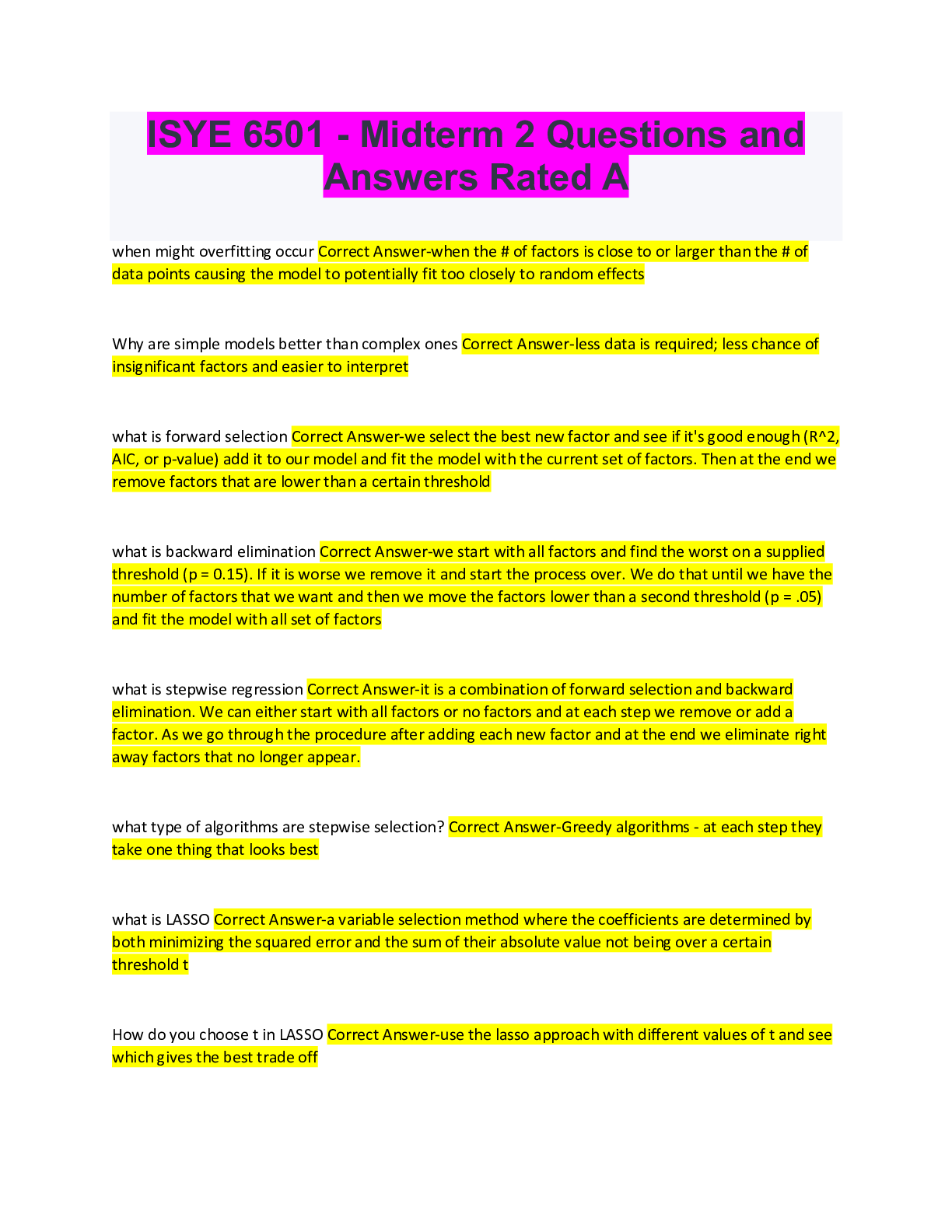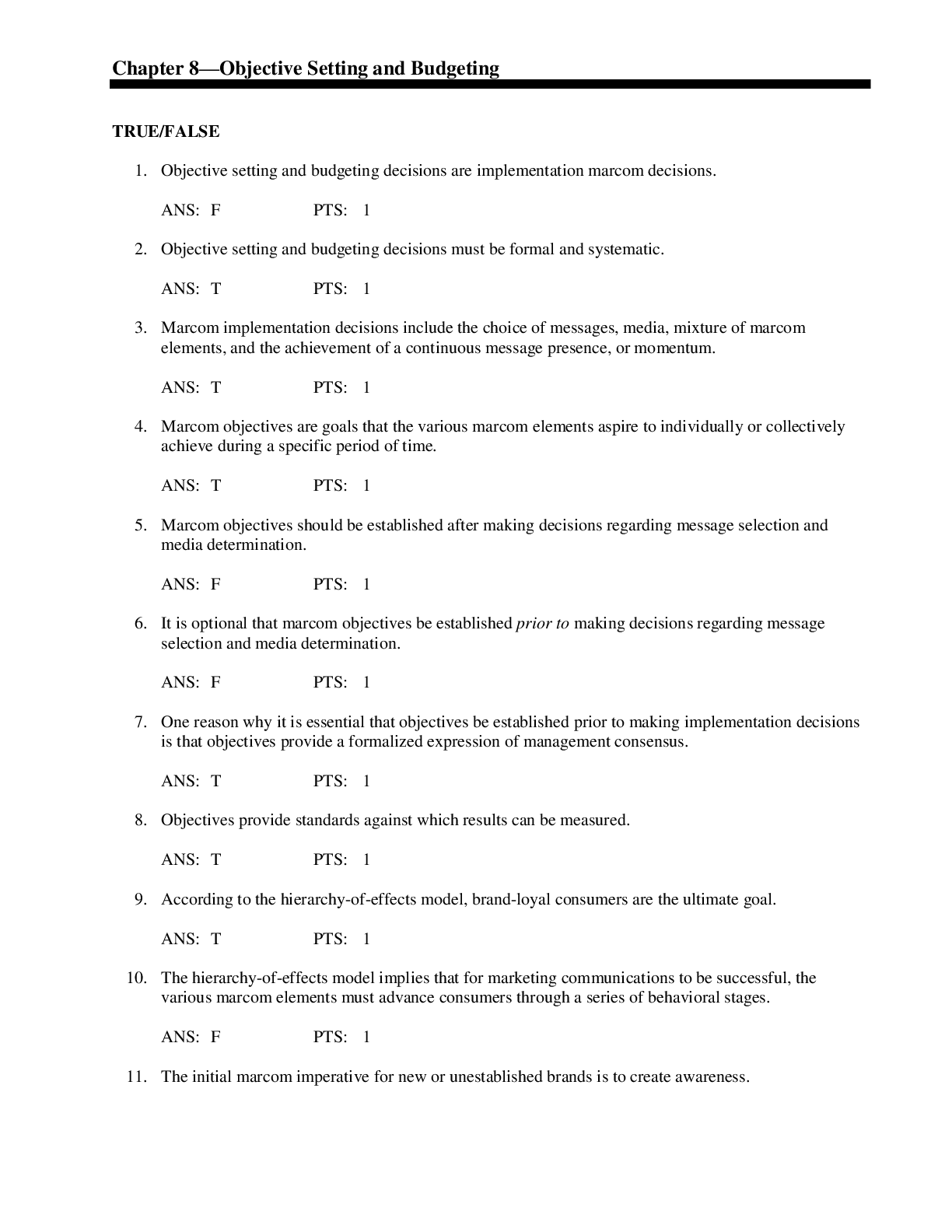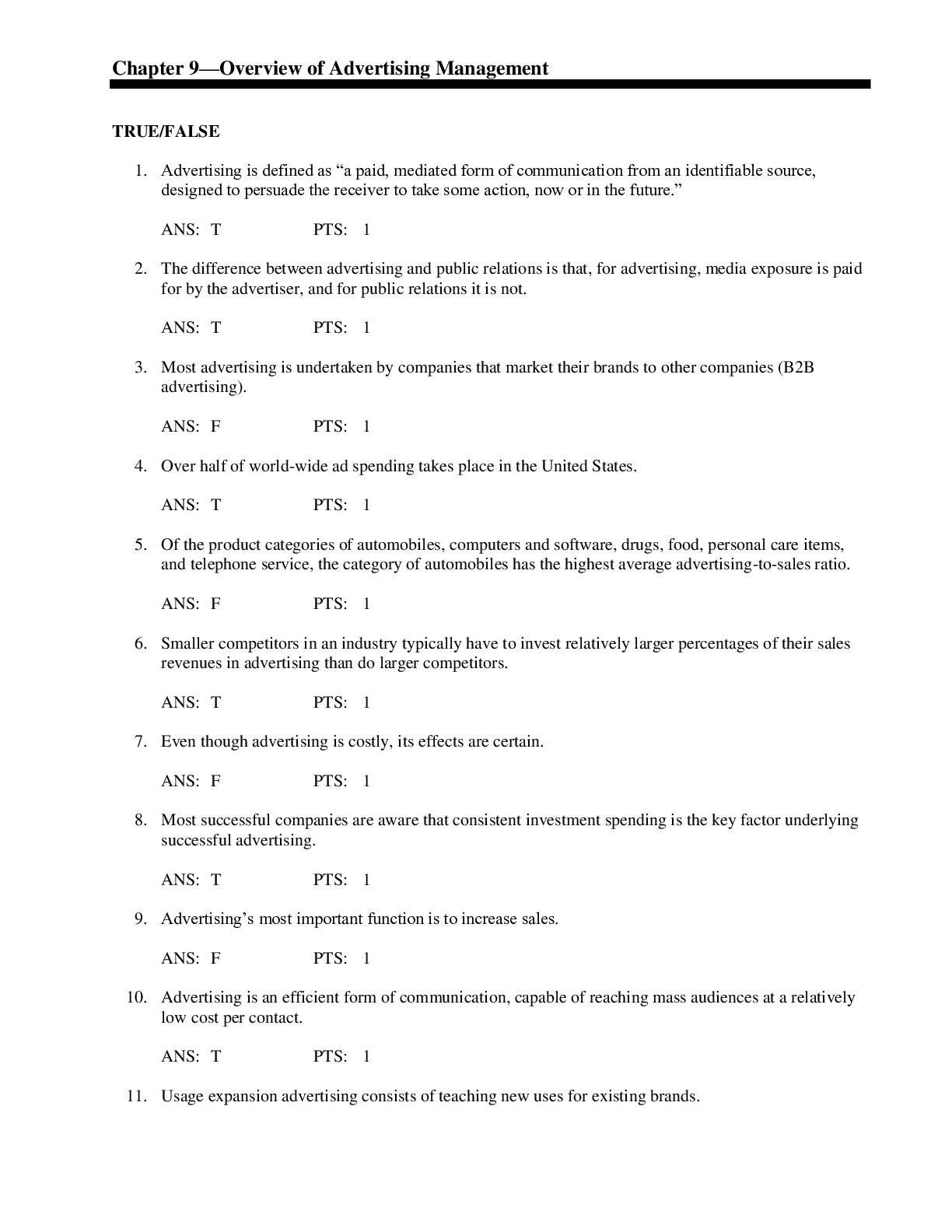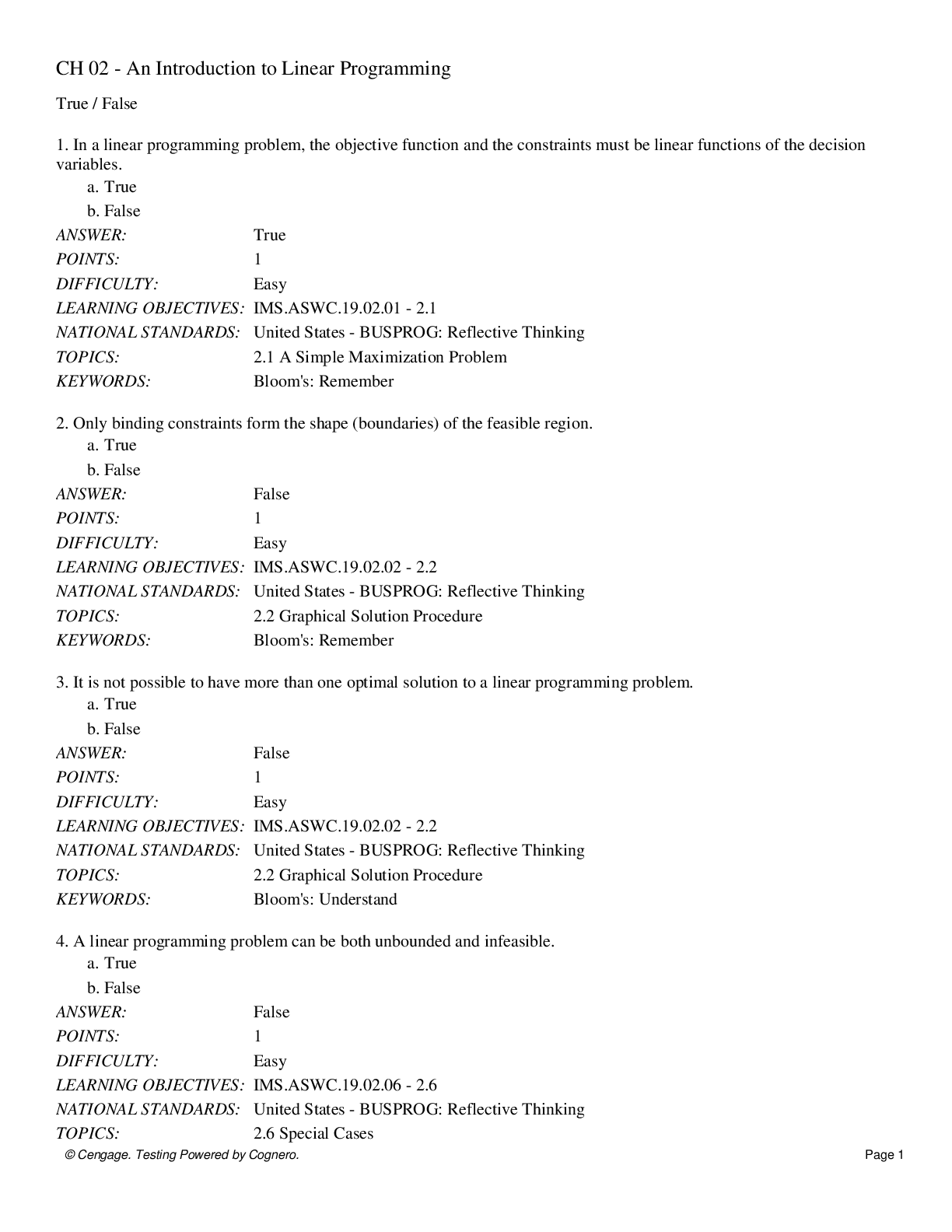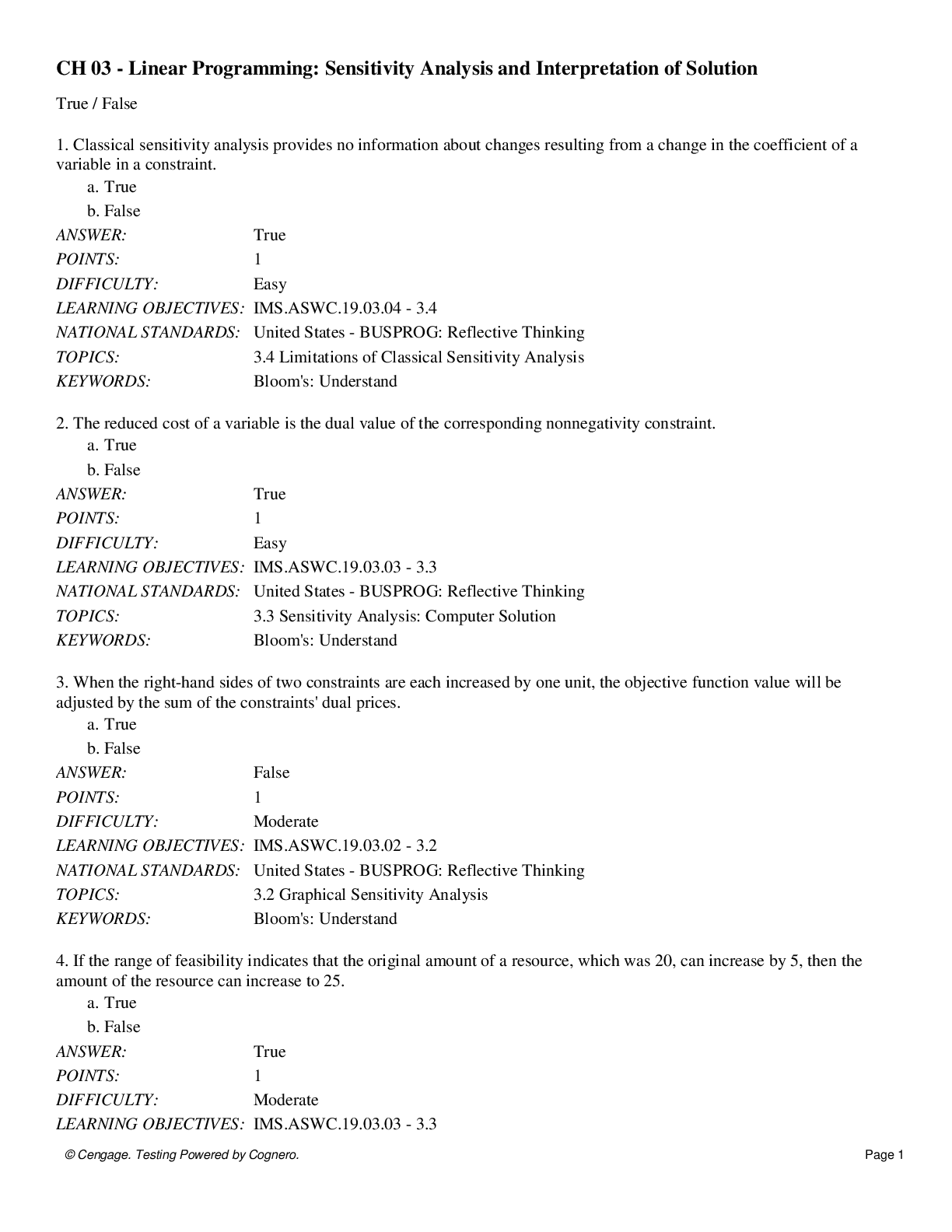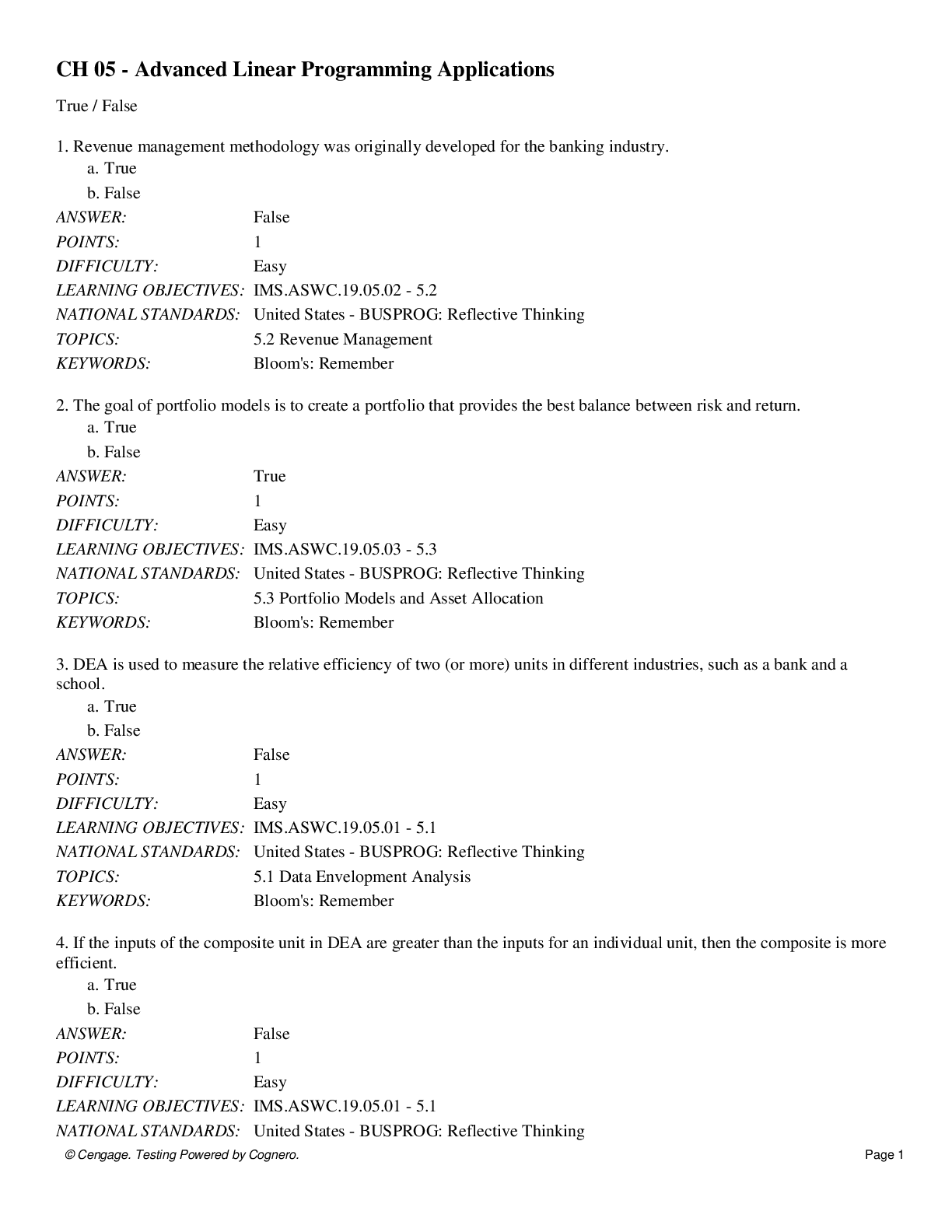*NURSING > QUESTIONS & ANSWERS > NHA CCMA Questions and Answers Latest Updated With Complete Solutions. Graded A+ (All)
NHA CCMA Questions and Answers Latest Updated With Complete Solutions. Graded A+
Document Content and Description Below
NHA CCMA Questions and Answers Latest Updated With Complete Solutions CC Correct Answer-Chief Complaint Segment Correct Answer-Line between two wave forms P-wave Correct Answer-Atrial Depolarizati... on How many 1mm boxes are in a 6 second Rythm strip? Correct Answer-30 one millimeter boxes The SA node represents which waveform on the ekg? Correct Answer-Only the P-wave What is the reading you can get from the RR interval? Correct Answer-Ventricular Pulse What is the primary stage of Hemolisis? Correct Answer-Vascular phase and platelet phase together What is Electophoresis? Correct Answer-Analyzation of the chemical components of blood e.g. hemoglobin, serum, urinem cerebrospinal fluid based on electrical charge.Positive testing for occult blood in a stool sample turn which color? Correct Answer-Turns Blue on a positive test for occult blood in feces. The stages of Hemostasis: Correct Answer-1. Vascular 2. Platelet Phase 3. Coagulation Phase 4. Fibronolysis Blood Vessels Correct Answer-Aorta, arteries, arterioles, capillaries, venues, veins, superior and inferior vena cavae. Outer connective tissue layer of a blood vessel Correct Answer-Tunica adventitia Inner endothelial tissue layer of a blood vessel Correct Answer-Tunica Intima The inner smooth layer of a blood vessel Correct Answer-Tunica media The standards of right and wrong in a medical setting Correct Answer-Code of Ethics What do you find in capillaries? Correct Answer-A mixture of venous and arterial blood is found The average adult has how many liters of blood? Correct Answer-5-6 litersWhat is the percentage of water in blood? Correct Answer-92% Percentage of plasma in blood Correct Answer-55% Percentage of Formed Elements in the blood Correct Answer-45% 99% of formed elements in blood Correct Answer-RBC's or Erythrocytes Where you find Hemoglobin Correct Answer-RBC's Where do all blood cells originate? Correct Answer-Bone Marrow How many RBC's per microliter of blood Correct Answer-4.2-6.2 million What is the second most numerous WBC? Correct Answer-Lymphocyte with 20-40% Their numbers increase in intracellular infections and TB Correct Answer-MonocytesTheir numbers increase in bacterial infections and often are first on scene Correct Answer-Neutrophils These WBC's play an important role in viral infection as well as in immunity. Correct AnswerLymphocytes Number of leukocytes for average adult per micrometer Correct Answer-5000-10000 Leukopenia Correct Answer-Decrease in WBC's seen with viral infection and leukemia Comprises 3-8% of wbc or leukocytes Correct Answer-Monocytes Largest in size of the leukocytes Correct Answer-Monocytes Carries Histamine Correct Answer-Basophil Injury to a blood vessel that causes it to constrict, slowing the clot of blood Correct Answer-Cascular phase of hemostasis Preferred site for venipuncture Correct Answer-Antecubital fossaTest used to evaluate the intrinsic pathway and monitor heparin therapy Correct Answer-APTT also know as PTT Test used to evaluate the extrinsic pathway and also used to monitor warfarin therapy Correct AnswerPT Fibrinolysis Correct Answer-Breakdown and removal of a clot Converts the temorary platelet plug into a stable fibrin clot Correct Answer-Coagulation phase 2nd choice vein for venipuncture most often the only one palpatable in an obese pt Correct AnswerCephalic vein Antiseptics used in Phlebodtomy Correct Answer-70% isopropyl alcohol pads most common, provolone iodine for bc, s and chlorhexidine gluconate for patients that are allergic to betadine/ iodine Length of needle commonly used in venipuncture Correct Answer-1 ince (up to 1.5") Guage of needle that can cause hemolysis Correct Answer-Smaller than 23 guage Average gauge of needle used for drawing blood Correct Answer-21-223 skills of the phlebotomist Correct Answer-social, clerical, technical Analytical errors during collection of blood Correct Answer-extended tourniquet time, hemolysis, wrong order of draw, failure to invert tubes, faulty technique under filling tubes Analytical errors before collection of blood Correct Answer-Patient misidentification, improper time, wrong tube, not fasting, exercise (cortisol levels), PT posture, poor coordination with other treatments, improper side prep, medication interference Analytical errors after blood collection Correct Answer-Failure to separate serum from cell (glycolisis), improper use of serum separator (not inverting tubes or not spinning tubes) delays in processing, exposure to light, improper storage conditions, dimming clots Fistula Correct Answer-Permanent surgical connection between an artery and a vein, never used for venipuncture Edima Correct Answer-Accumulation of fluid in tissue Thrombophlebitis Correct Answer-Inflammation of a vein with a clot formationExplanation of Hemoconcentration Correct Answer-The increase in proportion of formed elements to plasma caused by leaving on the tourniquet for more than two minutes Consequence of insufficient pressure applied after withdrawal of needle Correct Answer-Thrombus additives in green top tube Correct Answer-heparin, sodium, litium, ammonium Why is the green top tube never used for hematology Correct Answer-Green tops additive heparin interferes with the Wright's stained blood test Common tests for the lifht blue sodium citrate tube Correct Answer-Coagulation studies, PT (extrinsic, warfarin) APTT, PTT (intrinsic, heparin) TT, BT, FDP Common tests for the lavendar edta tube Correct Answer-CBC, differential or diff., ESR, sickle cell screening Common tests for this color tube are chemistry tests performed on plasuma such as Ammonia, carboxyhemoglobin and STAT electrolytes Correct Answer-Green top tube (heparin) Tests How long does it take for blood to clot by normal coagulation process in the red top tube? Correct Answer-30-60 minsThe primary purpose is to provide reliable data about a patients health status by ensuring the accuracy of a test while detecting and eliminating error Correct Answer-What is quality control Common test for the red topped tube Correct Answer-Serum chemistry tests, serology tests, blood bank (glass only) Order of draw for cappilary specimens Correct Answer-lavender first, then tubes with other additives, then tubes with out additives Antiseptic not used on a dermal puncture site Correct Answer-Betadine (because it interferes with several tests like bilirubin, uric acid, phosphorus and potassium For which procedure would you warm the site for a minimum of 3-4 minutes to increase blood flow? Correct Answer-dermal punctures (heel sticks) Which are the preferred sites for dermal punctures Correct Answer-the distal segment of the third or fourth finger of the non-dominant hand heel sticks are performed on which patients? Correct Answer-infants less than 1 year old Where on the foot is the dermal puncture made on patients less than a year old Correct Answer-the medial and lateral areas of the plantar surface of the footdermal puncture is made in Correct Answer-the fleshy portion of the finger slightly to the side of the center perpendicular to the lines of the fingerprints What will occur if you puncture the heel too deep? more than 2 mm Correct Answer-osteomyalitis What are the identification requirements for blood bank Correct Answer-Pt's full name and DOB, hospital id # or ssn for outpatient, date and time of collection as well as the phlebotomist's initials This section of the lab uses serum to analyze the presence Correct Answer-Serology (immunology) Section When checking for hormones in urine when do you collect the urine sample Correct Answer-first voiding in the morning Which urine specimen provides the clearest, most accurate results? Correct Answer-Clean catch midstream specimen Which urine sample requires aseptic technique? Correct Answer-Clean catch specimen Examination of urine consists of Correct Answer-physical, chemical, microscopicPhysical examination of urine consists of Correct Answer-colume (adequate for testing, observing color and appearance, odor, specific gravity What amount of urine must you have to be sufficient for analysis? Correct Answer-25ml What is the normal range of specific gravity of random collection Correct Answer-1.005-1.030 normal range of specific gravity of urine in adults with normal diet and fluid intake Correct Answer- 1.015-1.025 Microscopic examination of urine requires this amount Correct Answer-10-15ml Urine Specific gravity Correct Answer-The ratio of weight of a given colume of urine to the weight of the same volume of distilled water at a constant temperature Glycosuria Correct Answer-presence of glucose in the urine Symptoms of patients with diabetes mellitus Correct Answer-glycosuria, polyuria, and thirstA urine pH of what is considered neutral? Correct Answer-7.0 pH the copper reaction test is used for what? Correct Answer-screening for glucose in urine The presence of leukocytes in urine is an indicator for what? Correct Answer-bacteruria or UTI Urine Screening for UCG or HCG Correct Answer-Pregnancy Test HIPPA is for? Correct Answer-Patient Confidentiality The four elements of Negligence Correct Answer-Duty, duty of care, derelict= breach of duty of care, direct cause, damage Tort Correct Answer-Wrongful act that results in injury to one person to another Examples of Tort Correct Answer-Battery, invasion of privacy, defamation of character Defamation of character by written statement is considered Correct Answer-libelConsists of injury to another person's reputation , name or character through spoken (slander) or written (libel) Correct Answer-Defamation of character unpriveleged touching Correct Answer-Battery The release of medical records with out the patient's knowledge or permission Correct Answer-Invasion of privacy Good Samaritan Law Correct Answer-Rendering first aid within the scope of knowledge by a health care worker with out fear of being sued for negligence Hypothalamus Correct Answer-regulates and maintains body temperature Functions necessary for life Correct Answer-heart function, blood pressure, respiration, temperature Rectal Temperature range in celsius Correct Answer-37.0 -38.1 C Oral temperature range in Fahrenheit Correct Answer-97.6-99.6 F Axillary temperature range in celsius Correct Answer-35.9-37.0CTympanic temperature rang [Show More]
Last updated: 1 year ago
Preview 1 out of 30 pages
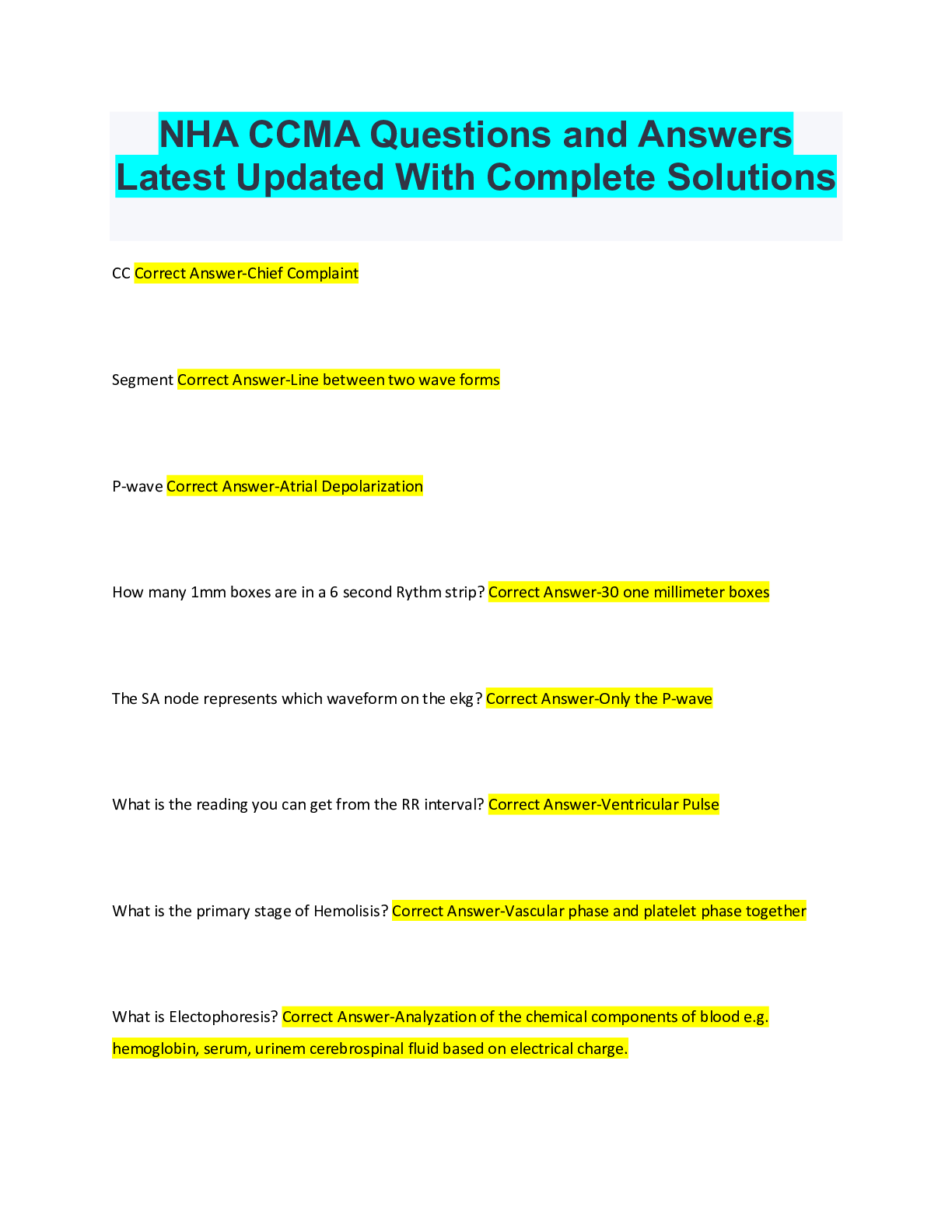
Buy this document to get the full access instantly
Instant Download Access after purchase
Add to cartInstant download
We Accept:

Also available in bundle (1)

CCMA Bundle, top Exam Papers
Down load this bundle for easy revisions. ALL LATEST VERSIONS, OVER 2000 EXAM QUESTIONS WITH ACCURATE ANSWERS, VERIFIED.
By bundleHub Solution guider 1 year ago
$32
57
Reviews( 0 )
$8.00
Document information
Connected school, study & course
About the document
Uploaded On
Sep 08, 2022
Number of pages
30
Written in
Additional information
This document has been written for:
Uploaded
Sep 08, 2022
Downloads
0
Views
199


